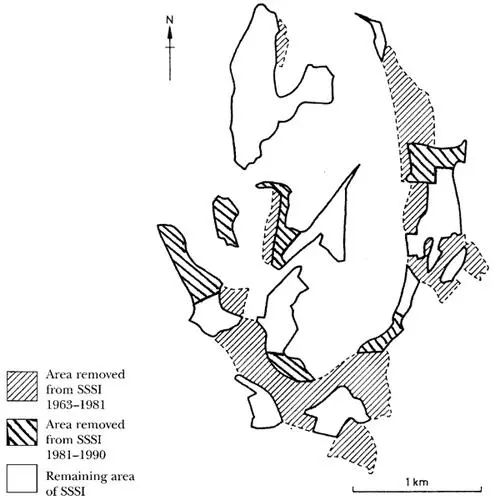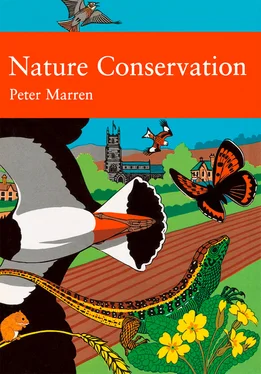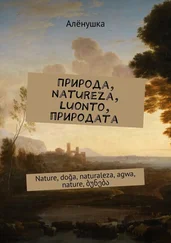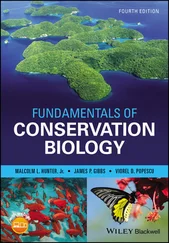Protecting a species is pointless unless its habitat is protected too. As the law stood until recently, you could convict someone picking rare orchids in a meadow, but do nothing to prevent a developer or farmer from destroying both the meadow and its orchids. Hence, nature conservation in practice is directed at saving the habitat. Most land in Britain is privately owned and dedicated to some sort of productive use that is usually not nature conservation. In 1949, Government was persuaded by the principle that some portion of the land should be set aside for nature in the interests of at least that part of the population which cares about such things. The principle was not new. The Norman kings set aside land for game for their own selfish purposes. And as Professor Smout reminds us, the eighteenth-century enlightenment took the view that while most of the land is destined for agricultural improvement, some of it should be set aside to delight rather than for productive use – ‘most for man, a little for nature’ (Smout 2000). The contribution of twentieth-century conservationists has been to work out where the best spots for nature lie. The next stage is to see to it that these valuable areas are looked after in a way that ensures they stay valuable.
The Nature Conservancy and its successors evolved methodologies for grading semi-natural land according to its value for wildlife. These were based on attributes such as size (generally the bigger the better), diversity and ‘naturalness’ – based that is, on the quality of the habitat rather than on rare species in isolation. The original idea had been to preserve all the very best examples of woods, heaths, chalk downs and so on as nature reserves. However, that was never going to be enough, so an alternative to direct ownership (or at least proxy management) was needed. From 1949, the Nature Conservancy was allowed to ‘schedule’ any area of land of special interest ‘by reason of its flora and fauna, or geological or physiographical features’. These were (and are) called SSSIs or Sites of Special Scientific Interest. This clumsy term has caused much head-scratching. Here ‘Scientific’ really means ‘nature conservation’ in an adjectival sense. Every now and then someone suggests changing the name, but nothing has ever come of it for fear of adding to the confusion. In any case, until 1981, SSSIs did not amount to very much. The job of the Conservancy was to identify SSSIs, say why they were important and notify them to the local planning authority. In the case of a development requiring planning permission, the local authority would then decide whether to allow the development or refuse it. Of course the local authorities had their own plans and guidelines that were broadly in favour of SSSIs – but ‘the national interest’ always came first, and this could be interpreted in all sorts of ways. Moreover, the most common threats to SSSIs – agricultural improvement or tree planting – did not normally require planning permission. Altogether the Conservancy had been given a very poor hand. It could offer only pennies in compensation, while the ‘improvers’, by way of the Ministry of Agriculture and the Forestry Commission, could offer pounds.

The shrinking of a wildlife site. The Wye and Crundale Downs was recommended by the Wildlife Special Committee as a 1,500-acre (607-hectare) ‘National Reserve’ in 1947 as ‘a first-class example of typical Kentish chalk communities with many characteristic and rare plants and insects’. By 1970 the site had been reduced by ploughing to 415 hectares. Today it measures about 257 hectares (based on W.M. Adams, Nature’s Place ).
It is not surprising then, that, before 1981, many SSSIs went under the plough or turned into spruce plantations. For example, in 1963 a farmer received a ploughing grant for the destruction of Waddingham Common SSSI, one of the best natural grassland sites in Lincolnshire. The farmer offered to leave a token acre unploughed. Representatives of the Nature Conservancy and the local wildlife trust insisted on five acres as a bare minimum. The farmer laughed; the entire site was ploughed (Sheail 1998). In Wiltshire, 15 out of 27 chalk grassland SSSIs were ploughed out of existence between 1950 and 1965. In Kent, most of Crundale Downs, proposed in ‘Cmd. 7122’ as a ‘National Reserve’, went the same way (see above). The Nature Conservancy was urged to do more to obtain the co-operation of owners and occupiers through moral persuasion backed by ‘suitable annual payments’. Unfortunately the cash-strapped Conservancy was unable to pay anybody very much, and certainly could not compete with grants for agriculture and forestry.
If anything, the situation worsened after Britain’s entry to the European Community in 1973. In 1980, the NCC’s chief advisory officer, Norman Moore, estimated that 8 per cent of all SSSIs had suffered damage during the past twelve months , of which the main causes were agricultural improvements and the ‘cessation of traditional practices’ (due mainly to agricultural improvements). There had, in previous years, been attempts to strengthen SSSI protection, but they had all failed. In 1964, Marcus Kimball MP had presented a Private Member’s Bill that would have imposed a mandatory period for negotiations over the fate of an SSSI, during which agricultural grant-aid would be withheld. The agriculture departments quashed that idea on the grounds that no one knew how many SSSIs would be designated, and that it would cause ‘unnecessary disruption to farm businesses’. The Conservancy seemed to agree, stating that it preferred doing things by voluntary means. Four years later, the 1968 Countryside Act offered another opportunity to strengthen SSSIs, but again it was lost, largely through resistance by the agriculture lobby. The Act did enable the Nature Conservancy to enter formal management agreements with owners, but gave it no extra cash to do so. Moreover it effectively restricted the incentive on offer to a laughable one pound per acre. Until this limit was waived in 1973, not a single agreement was made (Shearil 1998).
It was clear to many that something needed to be done if Britain were to have a system of nature conservation worthy of the name. In 1977-78, the Amberley Wild Brooks case (see Chapter 9), decided that, on occasion, conservation and amenity aims should outweigh agricultural production. The Government’s own review body advised that legislation would be necessary to reconcile agricultural production and countryside conservation. By then there was growing public concern about the diminishing quality of the countryside, epitomised by the piecemeal loss of moorland on Exmoor, despite its National Park status.
The Wildlife and Countryside Act – origins and arguments
When the Conservatives under Margaret Thatcher came to power in May 1979, they inherited the bare bones of a Wildlife Bill. A new law was needed to implement an uncontentious Euro-directive for Special Protection Areas for certain wild birds, and also to ratify the Council of Europe’s Berne Convention on wildlife and natural habitats. Beyond that, the review committee had advised that something had to be done about strengthening SSSIs, but no one was sure what. Enter Michael Heseltine, the flamboyant new Secretary of State for the Environment, who combined a ‘managerial’ broadbrush approach to government business with a genuine interest in wildlife. In his memoirs, Heseltine mentioned that one of his first acts had been to summon the chief executive of the RSPB – the most important figure in nature conservation by virtue of his then 400,000 members – and ask him what he would like Heseltine to do. ‘If I may say so,’ added the Secretary of State, encouragingly, ‘you are unlikely ever to find a minister more sympathetic than me.’ It seems to have been Michael Heseltine’s influence that assured the eventual passage of the Wildlife and Countryside Bill, despite opposition within Cabinet (which at that time contained several country landowners). However, after laying down broad principles on involving landowners in safeguarding SSSIs, he characteristically left the details to his officials, and most of the Parliamentary business to his deputy, Tom King.
Читать дальше












![Various - Birds and Nature, Vol. 12 No. 5 [December 1902]](/books/745517/various-birds-and-nature-vol-12-no-5-december-thumb.webp)
![Various - Birds and Nature Vol. 11 No. 2 [February 1902]](/books/745533/various-birds-and-nature-vol-11-no-2-february-1-thumb.webp)